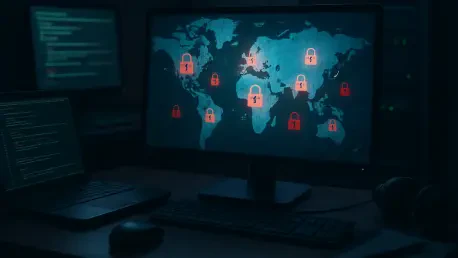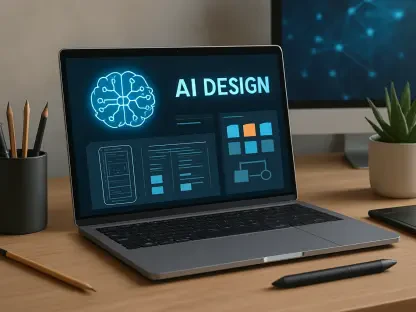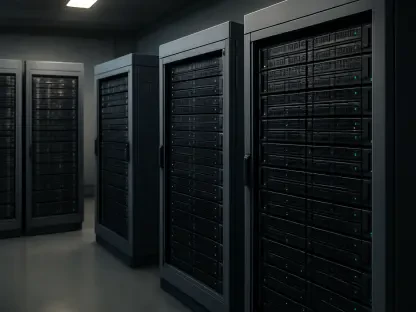In an era where cyber threats loom larger than ever, organizations across the globe are grappling with an unprecedented level of risk, from devastating ransomware attacks to covert nation-state espionage operations that can cripple entire industries. Cyber threat intelligence (CTI) has emerged as a cornerstone of defense, equipping businesses, governments, and institutions with the tools to anticipate, detect, and mitigate these dangers before they spiral into crises. The digital landscape is a battlefield, and CTI firms stand as sentinels, offering real-time monitoring, actionable insights, and predictive analytics to outmaneuver adversaries. As cyber incidents threaten financial stability, operational continuity, and reputational integrity, the importance of partnering with leading CTI providers cannot be overstated. This exploration delves into the forefront of the industry, spotlighting the firms that are shaping cybersecurity through innovation, specialization, and adaptability. By examining their unique strengths and the broader trends driving their success, a clearer picture emerges of how these companies are fortifying digital defenses against an ever-evolving array of threats. The focus here is on the critical factors—such as technological advancements, customer trust, and real-world impact—that distinguish the best in the field, providing a comprehensive guide to navigating this vital sector.
Key Trends in Cyber Threat Intelligence
Technological Advancements
The rapid evolution of technology has fundamentally reshaped the approach to cyber threat intelligence, with artificial intelligence (AI) and machine learning (ML) becoming indispensable tools for staying ahead of sophisticated attackers. These technologies empower CTI firms to sift through colossal datasets in real time, identifying subtle patterns and predicting threats long before they materialize. This shift from a reactive to a proactive stance marks a significant turning point in cybersecurity, as firms harness algorithms to anticipate ransomware campaigns or phishing schemes with remarkable precision. The ability to process and analyze information at such scale ensures that organizations are not merely responding to breaches but actively preventing them, saving resources and protecting critical assets in the process.
Another pivotal advancement lies in dark web monitoring, a capability that has become a linchpin for many leading CTI providers. The dark web serves as a shadowy marketplace for cybercriminals, facilitating everything from stolen credential trading to the coordination of ransomware attacks. Firms with expertise in this domain offer unparalleled visibility into underground activities, uncovering threats that conventional security tools often miss. This specialized insight acts as an early warning system, allowing organizations to address vulnerabilities—such as leaked data or compromised employee accounts—before they are exploited. As cybercrime continues to thrive in hidden corners of the internet, the value of this monitoring cannot be overstated for industries vulnerable to fraud and reputational damage.
Integration and Interoperability
A defining characteristic of top-tier CTI firms is their commitment to seamless integration with existing security infrastructures, a feature that significantly enhances operational efficiency. By ensuring compatibility with platforms like Security Information and Event Management (SIEM) and Security Orchestration, Automation, and Response (SOAR), these providers enable security operations centers (SOCs) to incorporate threat intelligence directly into their workflows. This interoperability minimizes the chaos of disjointed systems, reducing alert fatigue and allowing teams to prioritize genuine threats over false positives. The result is a more agile response mechanism, crucial in an environment where every second counts during a cyber incident.
Beyond mere compatibility, the push for unified security platforms reflects a broader industry demand for simplicity in increasingly complex digital ecosystems. As organizations adopt multi-cloud and hybrid environments, managing multiple vendors can become a logistical nightmare. CTI firms that integrate their intelligence with broader solutions like endpoint detection and response (EDR) or extended detection and response (XDR) offer a streamlined alternative. This trend toward consolidation not only reduces overhead costs but also ensures a cohesive defense strategy, where intelligence feeds directly inform automated responses and long-term planning. Such integration is fast becoming a benchmark for evaluating the effectiveness of CTI services in today’s fragmented technological landscape.
Specialization and Contextual Intelligence
The diversity of cyber threats necessitates a tailored approach, and many CTI firms are distinguishing themselves through specialization in specific risk areas or industries. Whether focusing on advanced persistent threats (APTs) that target government entities or digital risk protection for brands vulnerable to reputational harm, these providers deliver solutions finely tuned to unique challenges. This targeted expertise ensures that clients receive intelligence that is not only actionable but also deeply relevant to their operational context, whether they operate in finance, healthcare, or critical infrastructure. Such precision in addressing niche vulnerabilities sets specialized firms apart in a crowded market.
Equally important is the provision of contextual intelligence that extends beyond raw data to offer a global perspective on threats. Leading CTI providers incorporate geopolitical analysis and industry-specific insights, helping organizations understand the broader “why” behind an attack, not just the “how.” For instance, a financial institution might benefit from intelligence linking a spike in phishing attempts to a specific regional conflict, enabling more informed risk management decisions. This holistic approach transforms data into a strategic asset, empowering clients to anticipate threats within a wider framework of economic and political dynamics, thus enhancing their overall resilience against cross-border cyber operations.
Leading Cyber Threat Intelligence Firms
Comprehensive Solutions Providers
Among the frontrunners in the CTI arena are firms that offer end-to-end solutions, blending threat intelligence with a suite of security tools to cater to large enterprises with complex needs. These providers stand out for their ability to integrate CTI with EDR, XDR, and incident response capabilities, creating a unified platform that simplifies cybersecurity management. By reducing the need for multiple vendors, they enable organizations to streamline operations, particularly in multi-cloud or hybrid environments where consistency is paramount. This comprehensive approach is especially valuable for entities facing a broad spectrum of threats, from ransomware to insider risks, ensuring that intelligence translates directly into fortified defenses across all digital touchpoints.
The strength of these all-in-one providers lies in their scalability and adaptability to diverse threat landscapes, making them a preferred choice for global corporations. Their platforms often leverage AI-driven analytics to process vast amounts of data, delivering predictive insights that help preempt attacks. Additionally, the integration of real-time monitoring with automated response mechanisms ensures rapid mitigation of incidents, minimizing potential damage. While the cost of such extensive services can be a barrier for smaller organizations, the value they provide in terms of operational efficiency and robust protection often justifies the investment for enterprises with significant exposure to cyber risks, positioning these firms as leaders in the industry.
Niche and Specialized Experts
Contrasting with broad-spectrum providers, several CTI firms excel by focusing on niche areas such as dark web intelligence or digital risk protection, addressing specific vulnerabilities with laser-like precision. These specialized providers are particularly appealing to organizations with targeted concerns, such as preventing data leaks that could undermine customer trust or safeguarding brand reputation against online fraud. Their deep dive into particular threat vectors often uncovers risks that broader platforms might overlook, offering a complementary layer of security that can be paired with more general CTI services for comprehensive coverage.
The value of niche expertise is evident in how these firms tailor their offerings to meet the unique demands of certain sectors or risk profiles. For instance, a company focused on dark web monitoring might provide critical alerts about stolen credentials circulating in underground forums, enabling proactive password resets or account lockdowns. Similarly, firms specializing in digital risk protection help mitigate threats to public perception by tracking malicious campaigns or counterfeit operations online. While their scope may be narrower, their impact is profound for clients with specific pain points, highlighting the importance of diversity in the CTI ecosystem to address the multifaceted nature of cyber threats.
Balancing Automation and Human Insight
A critical strength of leading CTI firms is their ability to harmonize cutting-edge automation with irreplaceable human expertise, particularly when confronting high-stakes or complex threats. AI and ML are powerful tools for sifting through data at scale, identifying patterns, and predicting attacker behavior with impressive accuracy. However, in scenarios involving nuanced threats like nation-state espionage or intricate breach investigations, automated systems alone often fall short. Firms that complement these technologies with expert-led research and forensic analysis provide a more robust defense, ensuring that intelligence is both data-driven and contextually enriched for maximum effectiveness.
This dual approach is especially vital in situations where the stakes are extraordinarily high, such as attacks targeting critical infrastructure or sensitive government data. Human analysts bring a level of intuition and strategic thinking that machines cannot replicate, particularly in interpreting intent or navigating geopolitical undercurrents behind a cyber operation. By blending automated efficiency with human insight, top CTI providers offer a balanced solution that addresses both the volume of everyday threats and the sophistication of rare but catastrophic ones. This synergy not only enhances threat detection but also informs long-term security strategies, making it a hallmark of industry leaders.
Accessibility and Scalability Challenges
Despite the advancements in CTI, a notable divide persists between providers catering to large, well-funded organizations and those accessible to smaller entities with limited budgets. Premium services from top-tier firms often come with steep costs and complex implementations, tailored for enterprises or government agencies with the resources to support them. While these solutions offer unparalleled depth in threat intelligence and integration, they can be out of reach for small-to-medium businesses that face similar risks but lack the financial or technical capacity to adopt such sophisticated systems, exposing a gap in the market.
Addressing this disparity remains a pressing challenge for the CTI industry, as smaller organizations are increasingly targeted by cybercriminals exploiting their limited defenses. Some firms are beginning to explore scalable, cost-effective options that maintain core intelligence capabilities without the hefty price tag, though such offerings are still in development. The need for accessible solutions is underscored by the reality that cyber threats do not discriminate based on company size—ransomware or phishing can devastate a small business just as severely as a multinational. Bridging this accessibility gap through innovative pricing models or simplified platforms could democratize advanced protection, ensuring broader resilience across the digital ecosystem in the years ahead.
Reflecting on Industry Impact
Looking back, the contributions of leading CTI firms have significantly strengthened the cybersecurity landscape, providing organizations with the tools to counter an array of digital threats with greater confidence. Their adoption of AI and dark web monitoring transformed how threats are detected and prevented, while seamless integration with security frameworks enhanced response capabilities across diverse environments. Specialization allowed tailored defenses for unique risks, and the balance of automation with human expertise addressed both routine and high-stakes challenges with precision. Even as accessibility issues persist, the groundwork laid by these firms sets a high standard for innovation and impact.
Moving forward, the focus should shift toward actionable steps to expand the reach of CTI services, ensuring that smaller entities can also benefit from advanced protection. Industry leaders might consider developing modular solutions that allow organizations to scale services based on budget and need, while partnerships with managed security providers could offer affordable access to expertise. Additionally, fostering collaboration between firms to share threat intelligence could amplify collective defenses against global cybercrime. These next steps promise to build on past achievements, paving the way for a more inclusive and resilient cybersecurity future where all organizations, regardless of size, stand a fighting chance against digital adversaries.









